If you’ve accidentally misplaced your MacBook when traveling or commuting to work, it’s been stolen, or you simply cannot locate your laptop, then Apple provides a straightforward method to finding it through its Find My feature — a tool that has led to countless iPhones and MacBooks being retrieved by their rightful owners.
Here’s how to find a lost MacBook.
Setting up Find My on your MacBook
Before we show you how to use Find My to locate a lost MacBook, let’s first take a look at how to set it up. For anyone who takes their MacBook with them to university, when traveling or commuting, or just to the coffee shop, it’s essential that you activate this tool for your system. If your system becomes lost at any given time, Find My is the closest you’ll get to a guaranteed recovery.
Step 1: Enable Location Services for your MacBook by heading to Security and privacy within System preferences, and then choosing the Privacy field.
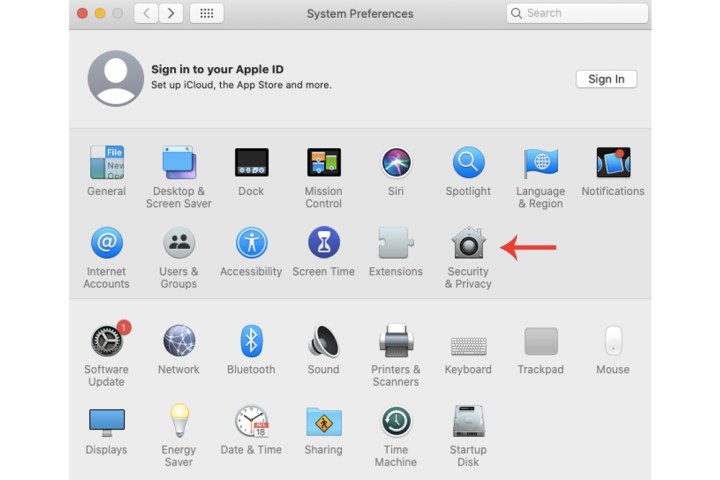
Step 2: Select the Enable location services box, after which you’ll need to choose Find My.
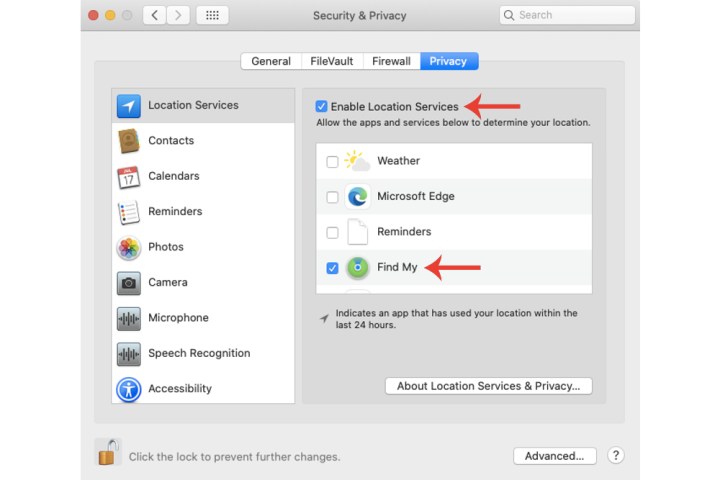
Step 3: Select the Apple ID icon within System preferences, select the iCloud tab and Find My Mac, and then hit the Allow box.
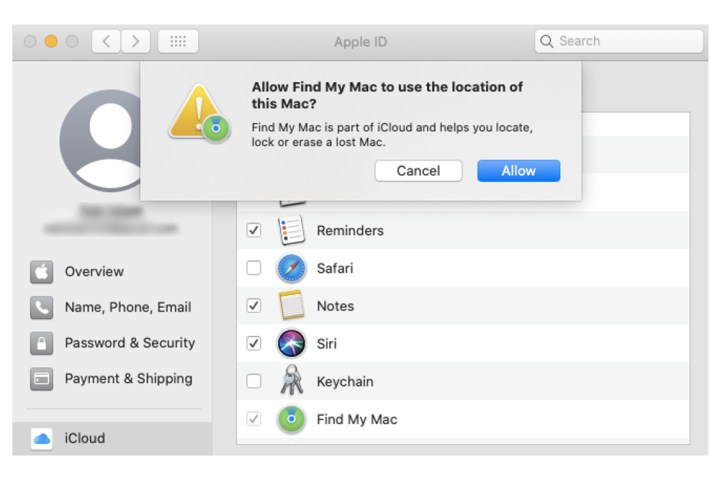
Step 4: To turn on the Offline finding feature (though it should be enabled by default), choose the Options button within the Find My Mac field.
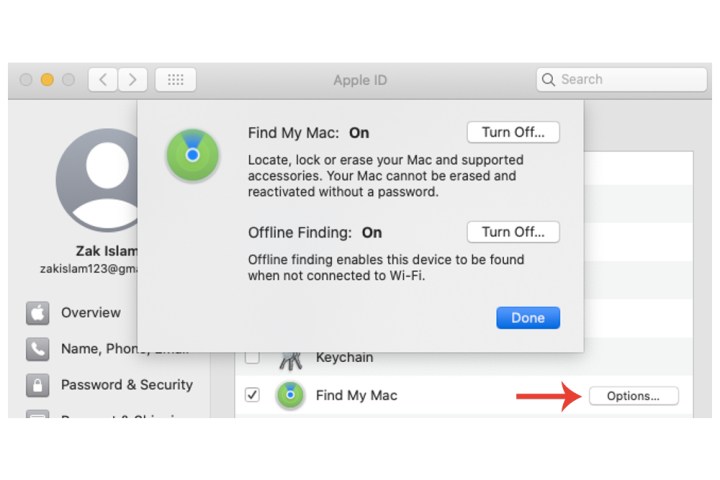
Using Find My to locate a lost MacBook
If you’ve already enabled Find My on your MacBook before it was lost, then you have a few options.
Step 1: On another device, sign in to your iCloud account on iCloud.com/find. Select the All devices option.
Step 2: Wait for Location Services to track your MacBook and showcase it.
Step 3: Once located, there are a few options to choose from. Play sound will do just that if your system is nearby. You can also Lock it or Erase it. The latter two choices should be considered if it’s been stolen.
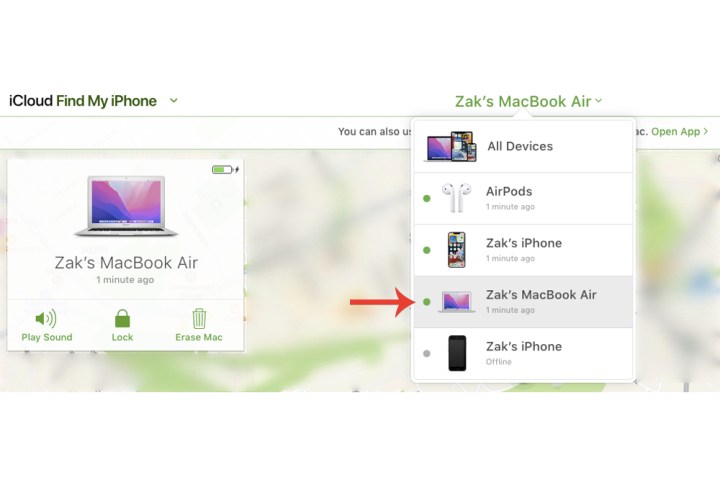
Using Find My on iPhone to locate a lost MacBook
If you don’t have immediate access to a desktop or another laptop or would prefer to just use your smartphone instead, then you can do so with your iPhone’s version of Find My.
Step 1: Select Settings, followed by your Apple ID at the top, and then select your MacBook from the available devices section.

Step 2: Below the name of your MacBook, select Show in Find My.
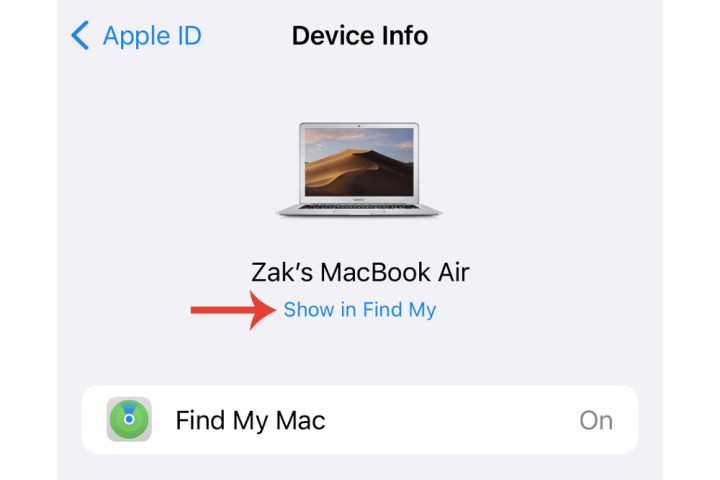
Step 3: You should now be able to see the location of your MacBook, with the ability to play a sound and be given directions to its location. You can also wipe the entire device by hitting the Erase this device setting.
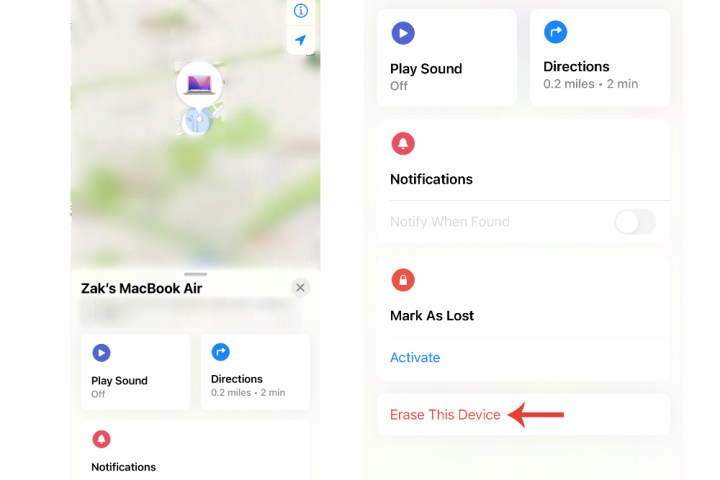
Finding a lost MacBook that’s offline
If your lost MacBook is in sleep mode, which more or less means it’s offline, Apple’s offline search mode can still locate your system (via the use of Bluetooth signals with other systems).
There is a caveat, though — you’ll need another device created by Apple, like an iPhone or iPad.
Step 1: On your other Apple device, select Settings, followed by your Apple ID, then select Find My > Find My iPhone, and then see if Find My network is enabled.

Step 2: In the Apple ID main settings page, see if your device is shown. If the MacBook is in a coffee shop or an area with other devices, then there’s a higher chance of it showing up even if the laptop has been closed.
Ultimately, however, there is no 100% guarantee you’ll be able to locate a lost MacBook. With Find My enabled, your chances increase significantly, but there can still be setbacks that prevent you from retrieving it. In this case, you can report the situation to the relevant authorities, for which your MacBook’s serial number will come in handy (situated on the packaging box and receipt of purchase).
It goes without saying that if you have lost your MacBook, you should immediately change all your sensitive data, including login credentials and your Apple ID.
Consider an AirTag
The Find My feature could yield no positive results if the device isn’t online or it’s been destroyed, etc. For an added safety measure, you can always use an AirTag and place it, say, within your MacBook’s laptop bag just in case it is stolen or misplaced.
If you’ve lost an iPhone or want to know how to find it for future references, then check out our guide on how to use Find My iPhone. We also have an in-depth guide on using the Find My app itself on an iPhone.
Editors’ Recommendations




